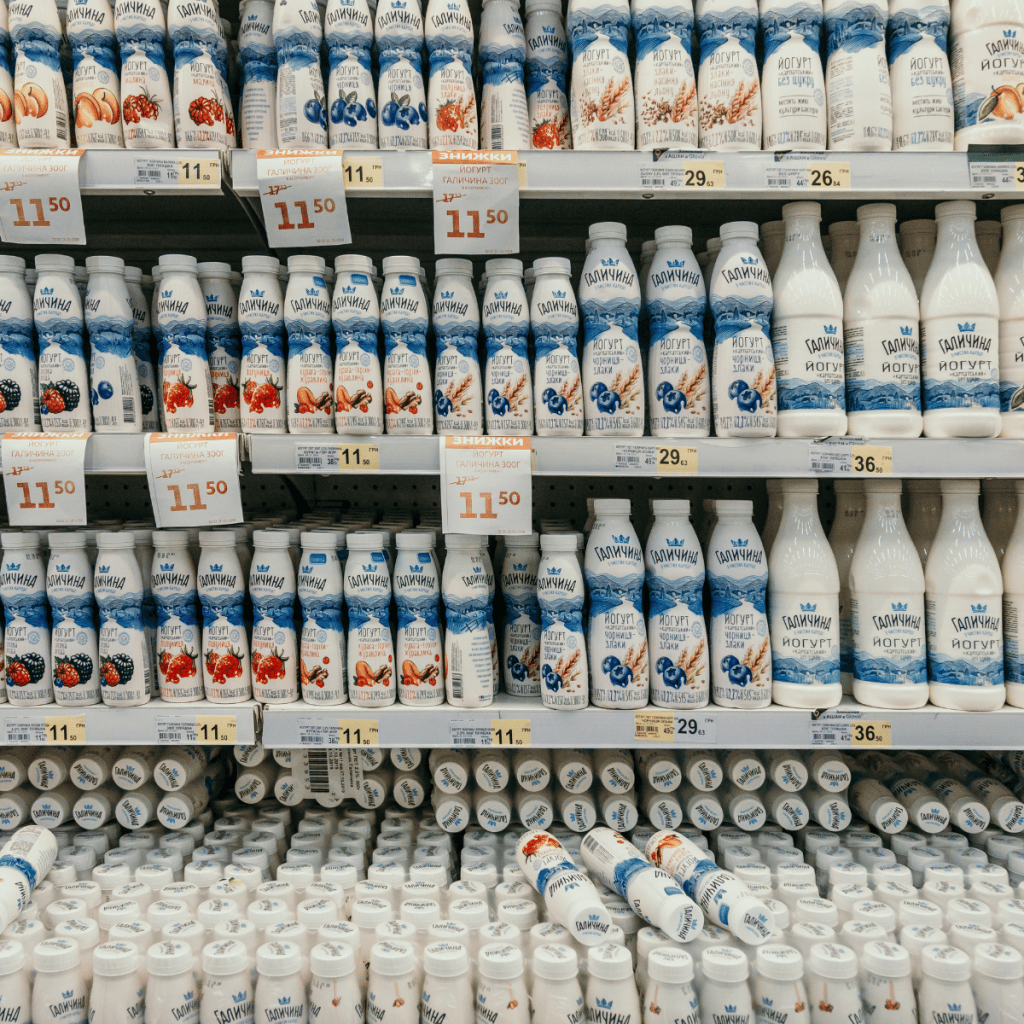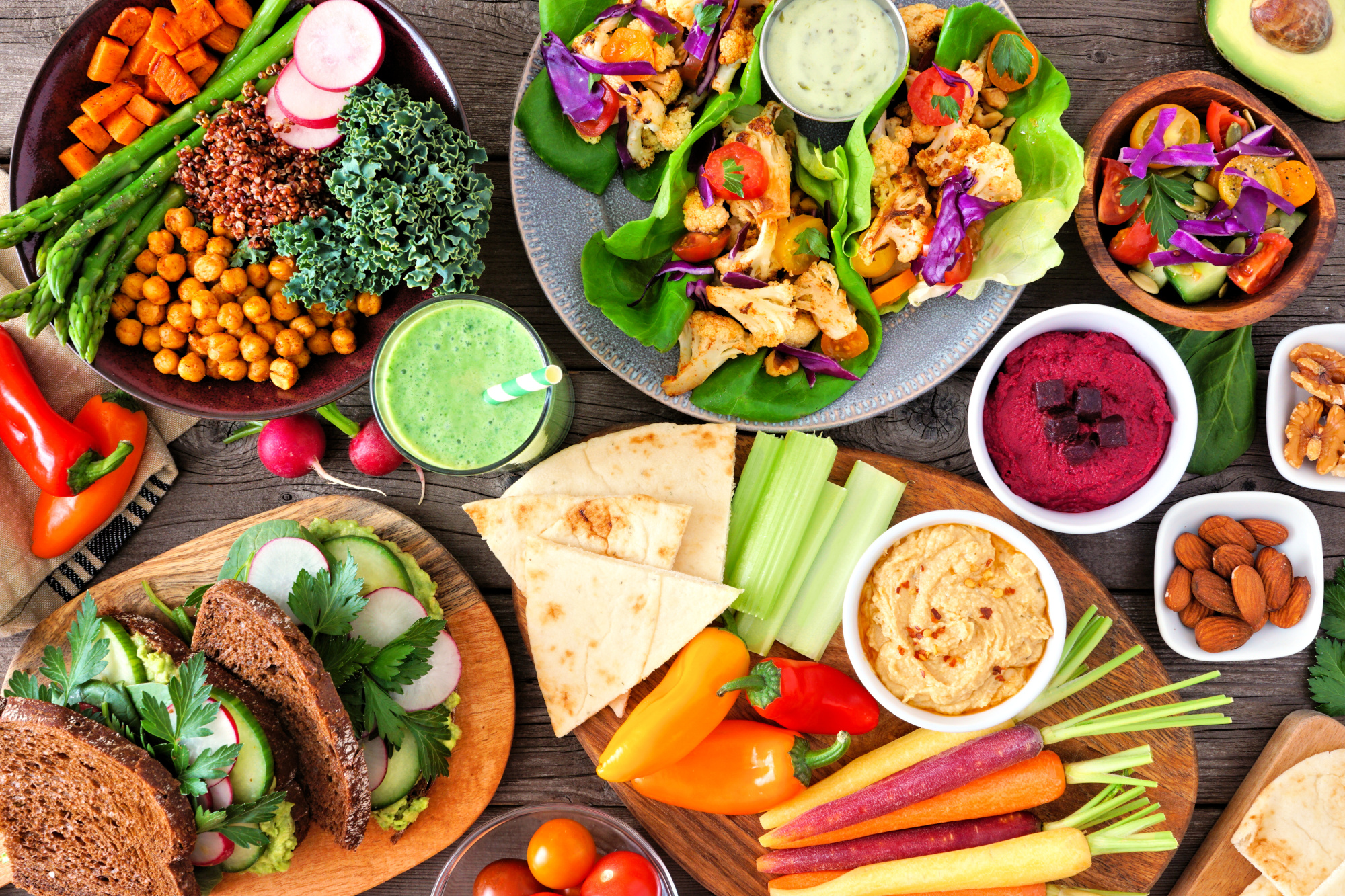In a recent webinar, our expert panel of plant-based professionals gave insights on achieving price parity in the plant-based sector. The panel consisted of Rob Reams, Vice President for Eat Planted; Phillip Marek, Global Product Manager of Plant-Based Ingredients at Döhler; and Piotr Lubiewa-Wielezynski, Director of Sales Development at Carrefour Poland.
Some of the key topics covered include:
- understanding the benefits, challenges, potential solutions, and opportunities involved when trying to achieve price parity with plant-based products;
- how to utilise discounts and special offers to drive sales of plant-based products;
- the dilemma of what comes first: scaling up or lowering prices;
- the impact of the cost-of-living crisis on the consumer and their purchases of plant-based products.
Keep reading for an edited summary of the webinar, or watch the full recording of the webinar and make sure you don’t miss a thing.
Full recording:
The webinar kicks off with the audience being presented with a question-and-answer poll, which asks: “Do you think the current price points of your products prevent consumers from purchasing your plant-based products?” After a few moments, the answers are in and, unsurprisingly, the majority of answers come back as “yes, they prevent some consumers from purchasing” and “yes, definitely.”
With this in mind, the definition of and complexities of price parity enter the conversation, with the panellists agreeing that, since different countries have different pricing structures, achieving price parity is not straightforward.
“Establishing price parity is a tricky thing,” says Marek, “because the pricing for conventional meat and conventional dairy is dynamic. It changes. Recently, there was an increase in Farmgate milk prices in Europe, from 35 cents to 50/60 cents. So, should the prices of plant-based goods also be dynamic, or fixed? That’s one question that needs elaboration. Secondly, countries around the world all have different pricing systems. In Denmark, vegan products are generally always cheaper than dairy products, whereas in Poland, it’s the contrary – UHT cows’ milks are half the price of plant-based ones, but in Germany, the gap between the two is a little bit smaller. So, I think it’s a tricky question to address. Personally, I think that pricing is only one decision criterion for consumers purchasing plant-based products long-term, but it’s not the only reason for them doing so.”

Reams elaborates on the complexities of price parity for plant-based goods by taking into account the varying types of animal meat.
“There are many different types of animal-meat cuts, then there’s organic and non-organic, and free-range. So, when we say price parity, what do we mean? Do we mean, against organic? Are we talking about certain cuts of animal meat? Then you’ve also got the dynamic of price parity – is it per kilo? Or is it that price parity is an absolute? Because of course, you can play with that, and you can use it to get into the consumers’ mind. Attack-price formats have always been something that manufacturers can play with to optimise price parity. There are lots of points to discuss concerning what we mean by price parity, but most people tend to think in absolutes – that in consumers’ minds, A versus B is a comparison between absolute prices”
Lubiewa-Wielezynski agrees. “We also need to differentiate between different kinds of plant-based products. Plant-based products that require innovative technology are, of course, going to cost more. For instance, plant-based milk costs more in Poland than regular milk because it requires more innovative technologies. But when we talk about plant-based products that are simpler, like standalone grains or vegetables, then, of course, these plant-based products don’t have such large discrepancies in price compared to animal meat and dairy products.”
Barriers and drivers to the industry
Having established the complexities of price parity, the conversation moves on to whether price parity is a barrier to the plant-based industry. The panellists agree that while price can prevent some consumers from purchasing plant-based products, it’s not holding back the industry as a whole.
Lubiewa-Wielezynski explains: “When I look at the growth rate of the plant-based industry, I’m not actually seeing much of a difficulty. Today, we have a growth of more than 20% in most plant-based categories. However, this might be because, for example, where I’m based, the Polish industry is a little less developed than those in other Western countries. However, I’m not saying that it is not a problem; it is a problem in terms of plant-based products becoming a massive-scale industry. Because today, at least in Poland, plant-based is a market for people that have more money and can afford to buy alternatives.”
“Yes, it’s nuanced,” adds Reams, “because, from a dairy-alternative and meat-alternative point of view, price is only the second most important driver for consumers buying plant-based products. Taste still drives most people’s decision-making in switching from animal meat and dairy to alternatives. The main driver is still, does it taste good? How can I bring it into my diet and lifestyle? And then, is it good value? Because as Piotr said before, there’s a big variation in the quality of protein ingredients. And really, it’s about consumer value perception. Many studies talk about price being a factor, but they should be talking about value. When you look at it in that context, plant-based products continue to be good value for a spectrum of different reasons. And that’s why we’re seeing growth, particularly over the last two years.”

Reams thinks that other current factors need to be considered, like the effects of the cost-of-living crisis on the consumer. “When you’ve got bigger macro factors, like those that are happening at the moment with the cost of living crisis, it is true that for a large proportion of people, shopper decision-making is absolutely about price point and the finite resources they’ve got to pay with,” he says. “That’s important. So, I’m not saying that price parity and price are not a pretty big factor, but I don’t think they’re the number one.”
Marek agrees that it’s a good idea to pitch value against price because there are many aspects to plant-based foods which make them great value, not only in terms of money. He explains that many consumers make purchasing decisions based on whether something is sustainable or not, while, for others, new indulgences and new experiences add value to a product. He adds that it’s useful to look at plant-based products and price parity from a life-cycle perspective; since plant-based is a new category, products will inevitably have higher entry pricing on shelves – R&D [research and development] is required, investments have been made and most brands are lacking scale, so the higher price point is initially needed to ensure that good margins can be made.
“If you look two stages ahead,” he says, “after seeding and scaling, there will certainly be a demand plateau coming in, then, I think, the price of the process will come down and support the growth of the plant-based category beyond the 20% per annum we have seen so far. Like Piotr mentioned, it’s a chicken and egg dilemma – what comes first, the lower pricing to achieve scale, or first the scale to achieve lower pricing?”
The cost of living crisis
People around the world are undoubtedly being affected by the current cost-of-living crisis, so how does our panel think the plant-based sector will be affected?
“I wish I knew the answer to that completely,” says Reams, “but I think what we are seeing already is a squeeze on basket size and on people making decisions, whether that’s switching and changing their behaviour (perhaps eating out less or trading down), or whether that’s their food shopping total, or the mix of food in their baskets.”
“I think there’s probably a number of ways we’ll be affected and all the big retailers, from Carrefour to Tesco, are looking at it – it’s definitely front and centre of a lot of people’s thinking. And therefore, it’s up to manufacturers, suppliers, and retailers themselves to adapt to that sort of change, and to continue to keep plant-based products at the forefront of their thinking, not just from a sort of Corporate Social Responsibility point of view, but in terms of the long-term benefits of plant-based products on people’s health, the planet, animal welfare. It would be a crying shame to let a downtick in the global economy stop what is fantastic momentum.”
Reams adds that it’s also important to continue to bring new consumers to the plant-based sector to encourage them to swap to eating more plant-based products. “There are some encouraging signs in this regard because, clearly, inflationary pricing on animal meat or dairy is growing at a faster rate than on plant-based products. So, it could well be that, with the inflation of meat and dairy, plant-based catches up to parity.”
Mature market versus young market
The plant-based sector is still a relatively emerging industry compared to animal meat and dairy, which has been a flourishing marketplace for decades. Evidently, a more mature market has the infrastructure to produce and market products at a lower cost, meaning that more often than not, animal meat and dairy products will be cheaper than plant-based products. Lubiewa-Wielezynski agrees, but he thinks that the plant-based sector is going in the right direction. “It’s just a question of how fast we will achieve price parity,” he says, “The technologies for plant-based foods are becoming cheaper all the time, so we are getting there, just maybe at a slower speed than we would like.”
“Yes,” Marek adds, “When you look at the P&I [planning and investment] statements from companies listed as plant-based you see a lot of R&D and marketing expenses to support their gross, which dairy or animal meat don’t need because they’re established and already on the shelf and in people’s baskets. I think if that is established, coming back to life cycle again, and seeding is over, then plant-based can truly scale. It’s just a matter of timing,”

Returning the discussion to the cost-of-living crisis and inflation, Marek has a ‘fun fact’ to share with the group. He says: “In Europe, dairy consumption this year to date compared to last year’s is down 2%, meanwhile the pricing on dairy is up 65%. So, this seems important information on price sensitivity. Unfortunately, I don’t have these figures for plant-based milks, but it would be interesting to see whether there will be a reconversion back to dairy once the price goes down. I’d also like to know how consumers are behaving – are they trading down, going from premium brands to private labels, or from organic to conventional grown and cultivated products? I think this will be interesting to see; we need this data.”
The supply chain
Since the plant-based industry is young, the supply chain for many products is also unestablished and in some cases, undetermined. Our speakers move on to talk about the key challenges that need to be addressed at each point of the supply chain to lower the price of plant-based goods to achieve price parity.
“Where to start?” exclaims Reams. “I think we are all well-placed to talk about it from an ingredient point of view, and Piotr, maybe from an in-retail point of view. How we see it at Planted is that you’ve got to look at all parts of the value chain to manage the end product that you want to reach your consumers. If you’re a manufacturer, then negotiate with your ingredient supplier. If you’re in it for the long game, look at long-term contracts and be smart about what you’re buying. That’s fairly obvious.”
He continues: “But then scale helps too, we’re lucky at Planted to be scaling up what we manufacture ourselves. And when you can do that there are some scales that you can leverage. Also, as a supplier, you can innovate – we’re a clean-ingredient business and we’ve got some pretty good technology and I&P [intelligence and planning] to be able to go and make a clean-label product with pure ingredients.”
“Ultimately, it is complex, but on the basis of ingredients, it’s less complex. And that also allows us to go in and mitigate cost increases. So I think the questions are for the retailers because there is a massive gap between the prices of dairy and animal meat versus alternatives. I do see the need sometimes for retailers to have bigger margins because that encourages them to expand the category and fuel their growth, and do some interesting things with the category.”
“Then finally, governments all have a role to play. There’s a huge gap between subsidised dairy and animal meat and plant-based products, and VAT is enormous in some European countries while non-existent on labelled dairy alternatives.”
Lubiewa-Wielezynski adds his retailer point-of-view. “I would like to rebound on the question that was asked about whether retailers should be pressured to reduce their margins. From the business point of view of the huge corporation that I work for, I would like to ask, why should the pressure be on retailers and not on the producers? Shouldn’t the pressure be on governments to reduce VAT as we talked about before? But on the other hand, it all depends on the strategy of the given company; there are many retailers and they all have different strategies. All of them are leaning towards supporting the plant-based revolution. However, the pressure on them may differ.”
“What many retailers are doing now – for instance, what Carrefour in Poland is doing – is giving much more space to plant-based products than their share in volume and value sales. And for us, it is kind of an investment because if, for example, we have a deli, and there we sell plant-based meats and cheeses in bulk, we are giving away a space that normally would be used for conventional meat or hams or cheeses that bring more sales. But we want to show our customers that this is the plant-based revolution and that they can get involved here.”
Lubiewa-Wielezynski continues: “We have the biggest choice of plant-based products compared to other retailers, and it actually results in bigger losses. We are not able to sell all these products because not all our customers are buying them, so we put on promotions to help get them off the shelves at the end of shelf life. It is an investment. So, maybe the starting margin is high, though it’s not much higher, it’s average, but actually, the end margin is lower because of that investment.”
Discounts and promotions
With Lubiewa-Wielezynski’s comments, the panel’s attention turns to discounts, particularly at the end of shelf life. Piotr offers his advice on how retailers can use long-term discounts to increase consumer adoption of plant-based products. “We treat plant-based like any other category, though we do run some thematic actions for our plant-based assortment. Two or three times a year there will be a dedicated catalogue for these products, but we also want to promote local producers and local start-ups that innovate new plant-based products that are alternatives to conventional animal-based products. To extend our assortment, we’re working with a food-tech accelerator that has very many good startups, and together with them, at the start of our partnership, we have started running many different promotions and discounts. And this is how we use discounts to increase consumer adoption.”

Discounts are also something that Planted thinks about. “It’s important for brands to take a lead on this where they can,” says Reams, “We know our consumer best and retailers know their shoppers, so it’s about finding the right match. It doesn’t have to be that you have to go up to 50% off; it doesn’t have to be that depth of promotion, but being smart does matter. Yes, we engage in promotions at Planted; it makes a lot of sense to be smart around those – entertaining them, and working with retailers is massively helpful because you can get scale and tap into a consumer mindset. At certain times of the year, Veganuary is the obvious one, people are more engaged with the plant-based sphere. Here in the UK, we’ve got a bird flu crisis, right? And people are currently worried about having their turkeys for Christmas – what a brilliant opportunity to be talking about plant-based chicken or poultry! It’s top of mind. There are lots of ways within the marketing mix to go and play a promotional game, whether that’s a discount or not.”
Scaling up
Throughout this conversation, the panel has touched upon scale – certainly, increasing scale helps to lower pricing, but what do our speakers think needs to happen for the plant-based industry to achieve that scale? What are some of the key hurdles that we have to overcome and how?
Marek thinks that it starts with consumer awareness about the true value proposition of plant-based products. He explains that value is not just about price and nutritional intake, but also about new indulgence and sustainability. “What could also help to support this is bigger organisations, and non-governmental organisations like ProVeg, taking the lead in promoting the category to consumers,” he says “That’s a way to do it.”
“Yes,” agrees Reams, “I think you mentioned it before about how we can get the right innovation to help scale but brands also need to produce products that people want – that factor is important. And then you’ve got to market it. There are big players in the plant-based scene and then there are smaller players, and as long as products are not decreasing the value of plant-based, that’s a good thing. I used to work for Alpro and we used to talk about our competitors a lot, because the dairy industry is our real enemy, but our competitors are our frenemies, and I think that’s how we’ve got to look at it, to work together in all aspects of the supply chain – farmers, manufacturers, brands, and retailers. We can all work together to make sure that we’ve got great-tasting products that people want and we can market them together so that people are aware of the benefits. Then hopefully people will continue to get joy out of eating these products.”
“Absolutely. End-to-end collaboration is important,” adds Marek “Bear in mind that it is a new industry, and so the footprint, the design of end-to-end value chains is not laid out yet. This is the opposite of how it is in the dairy industry where you have clearly set lines and knowledge. We don’t have this for plant-based products yet, we need to understand the origin of crops, processing technology, how to reduce costs and improve yields, smarter costs, and effective formulations without compromising on taste and functionality. There are still a lot of things related to scale that are affected by knowledge gaps. If these gaps are closed, they can be used to achieve reduced costs to support lower retail prices in the long run. As plant-based professionals, we should also have confidence in the industry. We don’t need to think of ourselves as one-to-one with dairy and animal-meat products; we are a new indulgence, so our products can be positioned as great indulgence products if you detach them from animal-meat and dairy. This will also increase the confidence in marketing.”
Lubiewa-Wielezynski adds that it’s also important for the industry that retailers put the right people in charge of managing the plant-based category. “Sometimes the buyer that’s chosen to work with this category is 100% carnivore with no interest in plant-based products, and they don’t understand what people who eat plant-based products want. It’s impossible to manage this category in such a way. So, to conclude, the main responsibility of retailers is to ensure that the right person is working with the plant-based category. This is in order to manage it in the right way and to know what the stakes are. For example, the environment; they must know where we want to go with that.”
Q&A
Would you say that the slow-down of the plant-based meat sector in retail sales in the US is mostly linked to the price point of the product or is it a lack of taste, or long ingredient lists? What is it that’s preventing consumers from purchasing products a second time?
Lubiewa-Wielezynski explains that, with the current rates of inflation and the cost-of-living crisis, flexitarians are less likely to buy higher-priced plant-based alternatives. This is compared to animal meat, which is generally two or three times less expensive than plant-based alternatives. But this isn’t all – he adds that the slow-down is also due to there being a limited number of plant-forward shoppers in the first place, and people not knowing how to substitute plant-meat into their meals. He says: “In the US, there is a limited number of people that will eat plant-based meat for some of their meals. However, in other places around the world, you have bigger shares of people who will eat plant-based meals and meats. For example, India has one of the largest shares of vegetarians in the world – people there don’t just eat meat; they will also have meals that are meat-free. I think one of the main issues in the US is that people don’t know how to substitute their regular meals. We all need to learn how to substitute our ‘regular’ meals with other [meat-free substitutes] foods that are easy to cook.”
Reams joins in: “That’s an interesting point, because, in the US, I don’t think you see prices going up. In fact, you see more promotions happening in the plant-based category there, and when the category is struggling you see even greater discounts. So, I’m not sure it’s a price thing in the US at all. I think it’s a combination of things – are they continuing to bring new people into the category? In many Western countries [like the US] where people eat a lot of animal meat, plant-based meat alternatives also lag behind plant-based dairy alternatives on market penetration, so I think the potential is there. There might be a natural cap on interest, but I don’t think we’re anywhere near there yet, definitely not in Europe and I don’t think it’s even there yet in the US. So, this would suggest that there is an issue with continuing to get people to repeat purchase. Either this is due to people’s habits and taste, or people are becoming more cautious about the long lists of ingredients that are in some plant-based products and thinking that the more ‘processed’ products are not ‘good’ for them.”
“Yes,” adds Marek, “some plant-based ingredients’ lists are longer than just ‘it’s pork’ or ‘it’s beef’ etc., but we should remind ourselves that products being highly processed by technology is one thing – and this is true for protein isolates going into meat alternatives – but the production facility for conventional meat is the cow, right?”
Marek believes that while animal meat might have shorter ingredient lists on its packaging, behind the scenes there are a lot of inputs and outputs that farmers and producers don’t need to declare on the end product that consumers should be made aware of – antibiotics and hormone injections are inputs, while cows produce high amounts of CO2 and have a large water intake.
“We should reconsider the ingredients lists for conventional animal meat and frame it differently”, he says.
Key takeaways
Our panellists leave us with their key pieces of advice for how all players in the plant-based supply chain can all work to reduce the price of plant-based offerings and achieve parity with animal-based products.
“From a manufacturer and brand point of view,” Reams says, “I advise innovation – innovate and be mindful of your bottom line. Don’t do anything that will kill your bottom line, because we all have to survive and grow, so strike a balance. The best way to do this is to innovate and be smart in negotiation.”
Innovation is important across the whole life cycle of the product – at every level of the manufacturing process and in branding and retailing. “Get smart and always plan to improve at all levels of your organisation. How can you be smarter in reducing your supply chain and taking out costs? How can you be more innovative by looking at pack sizes or going from chilled to frozen or vice versa? Look at things in the broader sense and look at the things that you can control as a business.”
Marek suggests having a long-term business plan. “Consider the effects of scale on your operation and factor it into your P&I and planning. Also, work on strategic alliances – either vertically or horizontally. And lastly, have confidence in your products; don’t sell by price, sell by your other benefits.”
For Lubiewa-Wielezynski, choosing local producers is a way to help with the whole innovation process. He believes it will also put more pressure on bigger companies around the world to understand that the plant-based revolution is happening now – or perhaps it is in the past because it has already happened. “We need to look further into the future,” he explains.
If you want more insight and advice on the topic of achieving price parity, make sure to read our full whitepaper on the topic here. Keep an eye out for the next webinar in the series, and don’t waste any time in finding out all the ways you can accelerate your company’s transition to net zero, increase your profits, and help to build a better world!



